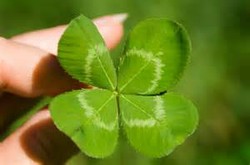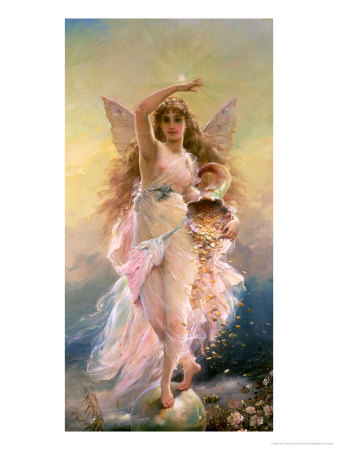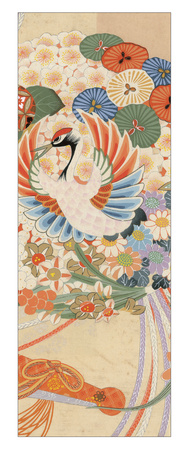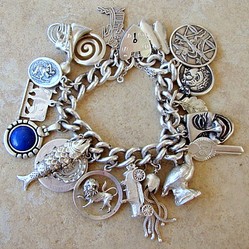Have you ever taken a wishbone and with a friend pulled it apart to see who got the bigger end? The winner, as the superstition goes, ends up with the larger half and is granted whatever wishes she or he made prior to the pull.
These and other superstitions always made me wonder if they really have any basis in fact and if they work. Haven’t you wondered?
Whether you’re hoping to win the lottery, increase your chances for a pay raise, ward off evil spirits or just hoping to have a little good fortune come your way, good luck charms have been around since Adam found out Eve wasn’t just a strangely shaped man. But did you know that some common good luck charms have pretty weird origins?

Do Good Luck Charms Work?
Do good luck charms work? Some have a very violent and grizzly history. Read here about the origins of the wishbone, rabbits foot, and other supposedly good luck symbols.
Rabbit’s Foot
Everyone – with the exception of Bugs Bunny – knows about Rabbits’ Feet and their good luck benefits. But the origins of the appendage as a symbol of good fortune may make you think twice about rubbing it to gain a little luck of your own. Early cave drawings suggest that our ancestors thought of the rabbit’s foot as a phallic symbol! So much for rubbing that thing, right? A more benign view of the foot’s value came from the Celts who believed that because the rabbit spent so much time underground, it must be in secret communication with the under world and therefore knew a whole lot more about what was going on than humans did.
Horseshoes?
The horseshoe doesn’t portend to have any gender-specific background to its claim of good fortune, but it does have a devilish story to tell. It seems that around 959 A.D., the gentleman who would become the Archbishop of Canterbury, St. Dunstan by name, was a blacksmith by trade. One day a guy with strange feet approaches him; feet that were cloven (hint, hint). Dunstan was quick to realize whom he was dealing with. When his visitor asked him to put horseshoes on his weird feet, Dunstan came up with a plan. He agreed, but proceeded to make the procedure as painful as he could and got the fellow to agree to being tied up during the process. While in that vulnerable position Dunstan got the devil to agree never to enter a home that had a horseshoe above the door. Perhaps the devil could have used a rabbit’s foot that day.
For the Greeks, on the other hand, the horseshoe was thought to be magical because it was made of iron, an element they believed could fend off evil. And, during the Middle Ages, it was believed that witches traveled on brooms because they were afraid of horses with horseshoes – to them it was the same as a crucifix in the face of Count Dracula.
Wishbone
Using a wishbone to make a wish goes back in time about two and a half thousand years. It originated with the Etruscans (Italy) who believed chickens could predict the future. I guess those birds never heard of Colonel Sanders and couldn’t predict his arrival. But, the Etruscans thought that since the hens told of their own eggs’ arrival by squawking that was good enough. For roosters, they announced that dawn was arriving so that apparently was enough for the Etruscans to believe the roosters were in the know. When the birds were killed (so much for being in the know), their collarbone was put in the sun to dry, later to be picked up and wished upon (but not broken – that was a ritual later added by the Romans).
Four Leaf Clover
How about a charm that comes with the luck of the Irish – the four-leaf clover? Well, it has a somewhat grisly history that originated with the Druids who would gather in the forest several times a year to make sacrifices (yes, human) and settle disputes. At the end of their ceremonies they would gather mistletoe and clover, which they believed could maintain harmony among their families. Apparently, those who were sacrificed were excluded from good luck or familial harmony four-leaf clover or not.
So, we’ve run the gamut of good luck charms and their less-than-luck-filled histories. Isn’t there anything that isn’t drenched in a history of blood, sex or the devil? Sure there is. Try crossing your fingers. Although it emanates from a pagan belief that a cross was a symbol of unity and that good spirits dwelled in the intersection of the two fingers, at least no animals (or humans) were harmed in the making of this legend. I guess that’s a PG rating in the good luck charm business.
You might also like
5 Steps To Create A Personal Heirloom Charm BraceletWant to make a personalized heirloom charm bracelet but not sure where to beg...








 The Problem With Wizzley and Amazon Associateson 10/17/2014
The Problem With Wizzley and Amazon Associateson 10/17/2014
 Happy Wife, Happy Life: Is It True?on 10/02/2014
Happy Wife, Happy Life: Is It True?on 10/02/2014
 Arborsculpture Designs Are Beautiful And Practicalon 09/30/2014
Arborsculpture Designs Are Beautiful And Practicalon 09/30/2014
 The Religious And Immoral Actson 09/23/2014
The Religious And Immoral Actson 09/23/2014


Comments
Revisiting your wizzley caused me to think of verbal good luck charms.
Do you know about the background to the saying "Break a leg!"
I like the Italian saying In bocca al lupo ("In the wolf's mouth") since it makes me think of the wolf whose kindness led to the founding of Rome -- even as I'd like a less unkind answer than the traditional Crepi! ("May he die!") or Crepi il lupo! ("May the wolf die!") or Che possa crepare! ("That he may die!").
TheWritingCowboy, Finger-crossing and horseshoes bother me the least. What do you think of tossing a pinch of salt over the shoulder?
Very interesting to learn the origins of these things. We always had horseshoes above the doors when I was a child.